Continuiamo il nostro racconto del Molise e cosa visitare in primavera, parlandovi della sua zona collinare e costiera. Un territorio (in particolare l’immediato entroterra) che a parer nostro non è ancora abbastanza valorizzato; basti pensare che tra i tanti tour proposti, spesso i turisti sono portati a visitare l’Alto Molise e la costa, saltando, purtroppo, quel che è presente nel mezzo. Eppure, questa parte di Molise ha tanto da offrire, sotto molti punti di vista. È un territorio ricco di storia e tradizioni millenarie, di paesaggi vari che dalla collina degradano dolcemente sino al mare, di campi di grano, vigneti ed uliveti, di tratturi, laghi e piccoli borghi.
We continue our tale of Molise and what to visit in the spring by telling you about its hilly and coastal area. An area (particularly the immediate hinterland) that, in our opinion, is still not valued enough; suffice it to say that among the many tours offered, tourists are often led to visit Upper Molise and the coast, skipping, unfortunately, what is present in between. Yet, this part of Molise has so much to offer, in many respects. It is an area rich in history and millenary traditions, varied landscapes that slope gently from the hills to the sea, wheat fields, vineyards and olive groves, sheep tracks, lakes and small villages.
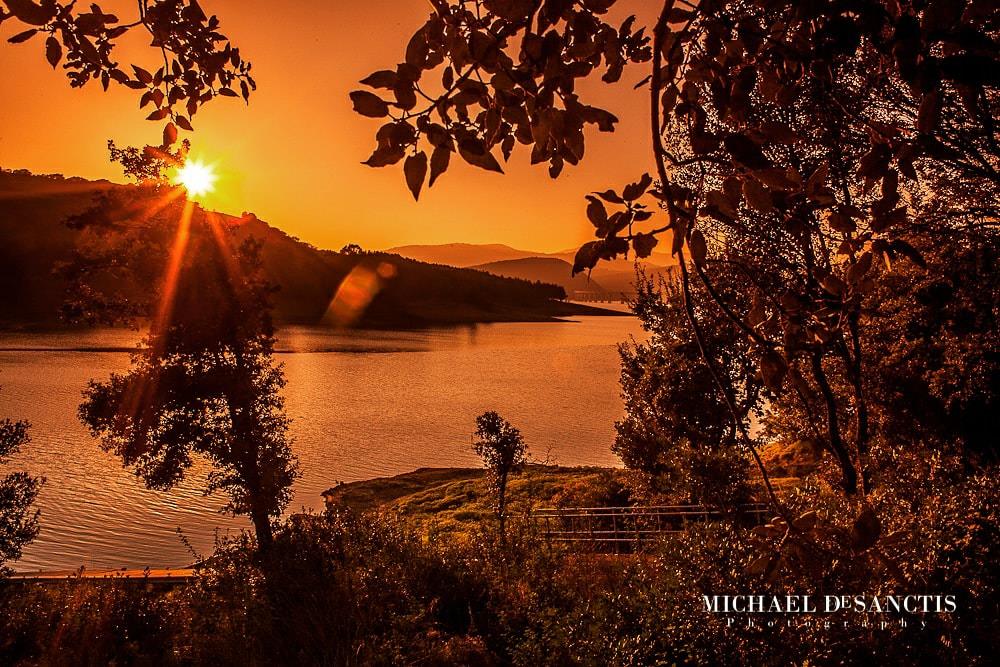
Lago del Liscione @MichaelDeSanctis
Anche in questo caso divideremo il nostro viaggio del “Molise ancora da scoprire” in due tappe. Buona lettura e buon viaggio!
Again we will divide our journey of "Molise yet to be discovered" into two stages. Enjoy your reading and have a good trip!
LARINO
Urbs princeps frentanorum (città capitale dei frentani), appellata in questo modo dagli storici latini, Larino è stata senza dubbio la città più importante dei Frentani (popolazione residente tra Abruzzo e Molise sin dal neolitico) ed oggi è sicuramente uno dei borghi molisani più ricchi di testimonianze storiche. Le sue origini risalirebbero, infatti, all’epoca etrusca nel 753 a.C. (prima di Roma), ma sono di epoca romana le testimonianze più cospicue. Del periodo in cui fu importante Municipio romano restano ben visibili l’Anfiteatro di epoca Flavia, con le sue quattro entrate ed una capienza di 16.000 spettatori (sono visibili ancor oggi alcune delle sedute dell’”ima clavea”), le vicine Terme, il Foro ed alcune ville romane con mosaici ben conservati.
Urbs princeps frentanorum (capital city of the Frentans), named in this way by Latin historians, Larino was undoubtedly the most important city of the Frentans (a population residing between Abruzzo and Molise since the Neolithic period) and today it is certainly one of the richest Molisian towns in terms of historical evidence. Its origins date back, in fact, to Etruscan times in 753 B.C. (before Rome), but the most conspicuous testimonies are from Roman times. From the period in which it was an important Roman municipality, the Amphitheater of the Flavian period, with its four entrances and a capacity of 16,000 spectators (some of the seats of the "ima clavea" are still visible today), the nearby Baths, the Forum and some Roman villas with well-preserved mosaics remain clearly visible.
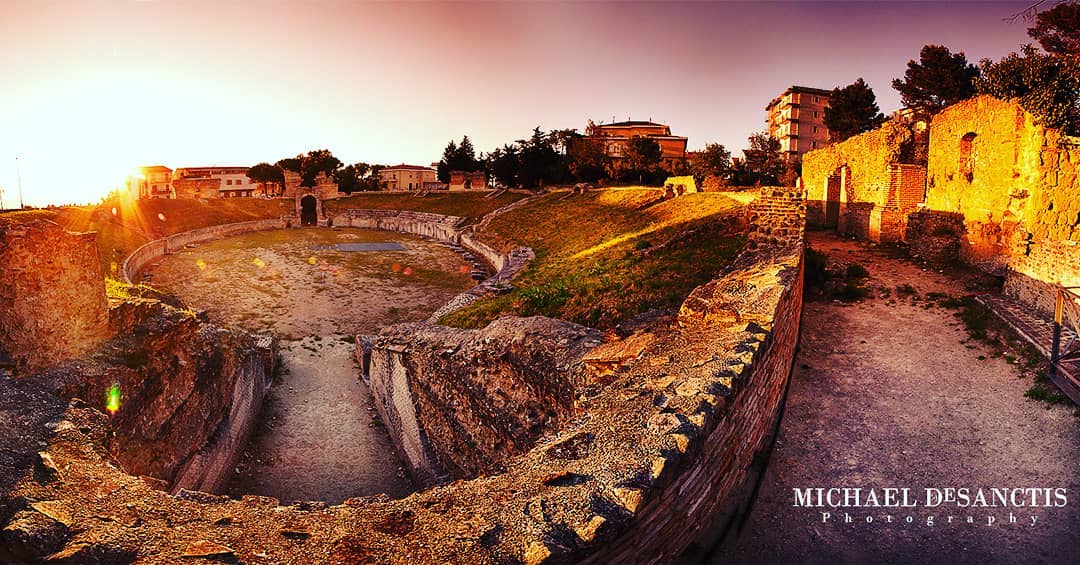
Anfiteatro @MichaelDeSanctis
Il centro storico di epoca medievale, che sorge in una zona a valle a circa un paio di km dall’area romana (nonché attuale città nuova), conserva dei veri e propri gioielli come la Cattedrale romano-gotica intitolata a S. Maria dell'Assunta e S. Pardo, patrono della città, con il suo particolarissimo rosone a 13 raggi, il Palazzo Ducale (attuale sede del Museo Civico, della Biblioteca Comunale e dell'Archivio Storico), il Museo e l'Archivio Diocesano all'interno del Palazzo Vescovile. Larino vanta anche il primo seminario vescovile della Cristianità, istituito il 26 gennaio 1564. Da visitare sono anche il museo del fiore di San Pardo, dedicato ai fiori di carta crespa realizzati in occasione della festività patronale, la mostra fotografica permanente della Larino storica e, per gli appassionati di calcio, il museo dedicato ad Aldo Biscardi, storico giornalista e conduttore televisivo, nato proprio a Larino.
The medieval-era historic center , which lies in a valley area about a couple of kilometers from the Roman area (as well as the present new town), preserves such gems as the Roman-Gothic Cathedral dedicated to St. Mary of the Assumption and St. Pardo, patron saint of the town, with its very distinctive 13-ray rose window, the Ducal Palace (present headquarters of the Civic Museum, Municipal Library and Historical Archives ), and the Diocesan Museum and Archives inside the Bishop's Palace. Larino also boasts the first episcopal seminary in Christendom, established on January 26, 1564. Also worth visiting are the St. Pardo Flower Museum, dedicated to the crepe paper flowers made for the patron saint's feast day, the permanent photo exhibit of historic Larino, and, for soccer fans, the museum dedicated to Aldo Biscardi, the historic journalist and TV host who was born in Larino.

Cattedrale di Larino @essentiadimora
Di notevole interesse sono anche il Convento dei frati cappuccini, del 1535, e alcuni palazzi e ville nobiliari del XVIII e XIX secolo.
Diverse sono le produzioni agroalimentari del territorio, spicca tra tutte quella di olio con la varietà Gentile di Larino (ed è proprio qui che è nata l’Associazione Nazionale Città dell’Olio).
Numerose le feste e tradizioni della città; da non perdere sono sicuramente le Luminarie, nel periodo natalizio, il Carnevale (uno dei carnevali storici d’Italia), e la festa patronale, la carrese di San Pardo (25-27 maggio), una tre giorni di sfilata di oltre 100 carri trainati da mucche e buoi, incredibilmente coinvolgente per i suoi suoni e colori.
Inutile dire che è una meta ricorrente per i nostri tour in e-bike.
Also of interest are the Convent of the Capuchin Friars, dating from 1535, and a number of palaces and noble villas from the 18th and 19th centuries.
There are several agrifood productions in the area, outstanding among them being oil with the Gentile di Larino variety (and it was here that the National Association of Oil Cities was born).
The town's festivals and traditions are numerous; definitely not to be missed are the Luminarie, at Christmas time, the Carnevale (one of Italy's historic carnivals), and the patronal festival, the Carrese di San Pardo (May 25-27), a three-day parade of more than 100 floats drawn by cows and oxen, incredibly enthralling for its sounds and colors.
Needless to say, it is a recurring destination for our e-bike tours.
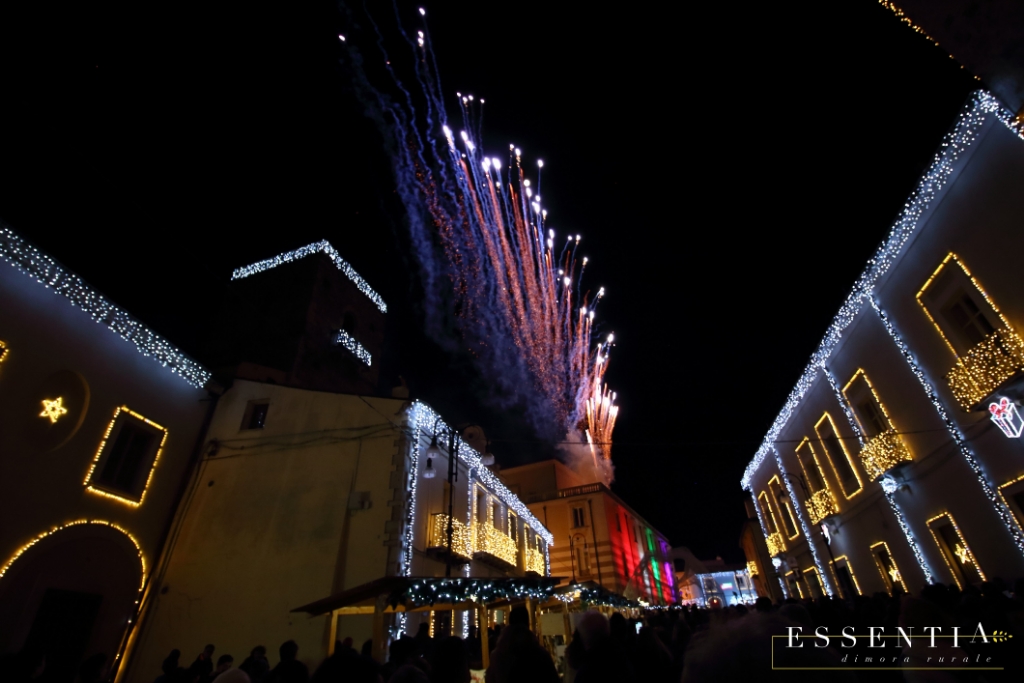
Luminarie di Larino ➡️ https://agriturismoessentia.com/blog/luminarie-e-presepe-vivente-quando-i-superlativi-non-bastano
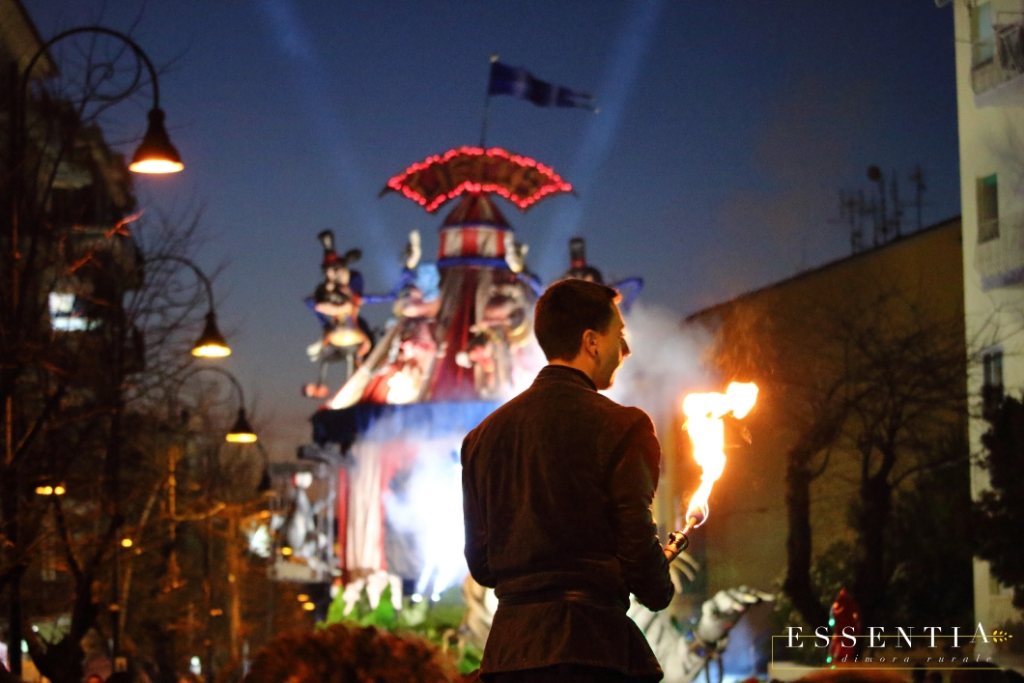
Carnevale Larino
CIVITACAMPOMARANO
Arroccato su una collina, come molti altri borghi del Molise, Civitacampomarano è nota per almeno un paio di motivi: l’imponente e ben conservato Castello Angioino che, con il suo ponte e gli esterni aggraziati sembra essere uscito da una fiaba, ed il recente e davvero interessante Cvtà Street Fest, un festival di street art nato da pochi anni che richiama artisti da ogni dove e che con le sue opere sui muri ed angoli più suggestivi del paese integra armonicamente passato e futuro. Un’armonia che si riflette anche nell’atmosfera che si può vivere nei giorni del festival, svoltosi nelle sue prime edizioni proprio in primavera, nei primi giorni di Giugno. Una manifestazione assolutamente da non perdere.
Perched on a hill, like many other villages in Molise, Civitacampomarano is known for at least a couple of reasons: the imposing and well-preserved Angevin Castle, which, with its bridge and graceful exteriors seems to have come out of a fairy tale, and the recent and really interesting Cvtà Street Fest, a street art festival born a few years ago that attracts artists from all over and that, with its works on the walls and most striking corners of the village, harmoniously integrates past and future. A harmony that is also reflected in the atmosphere that can be experienced during the days of the festival, held in its first editions precisely in spring, in the first days of June. An event absolutely not to be missed.
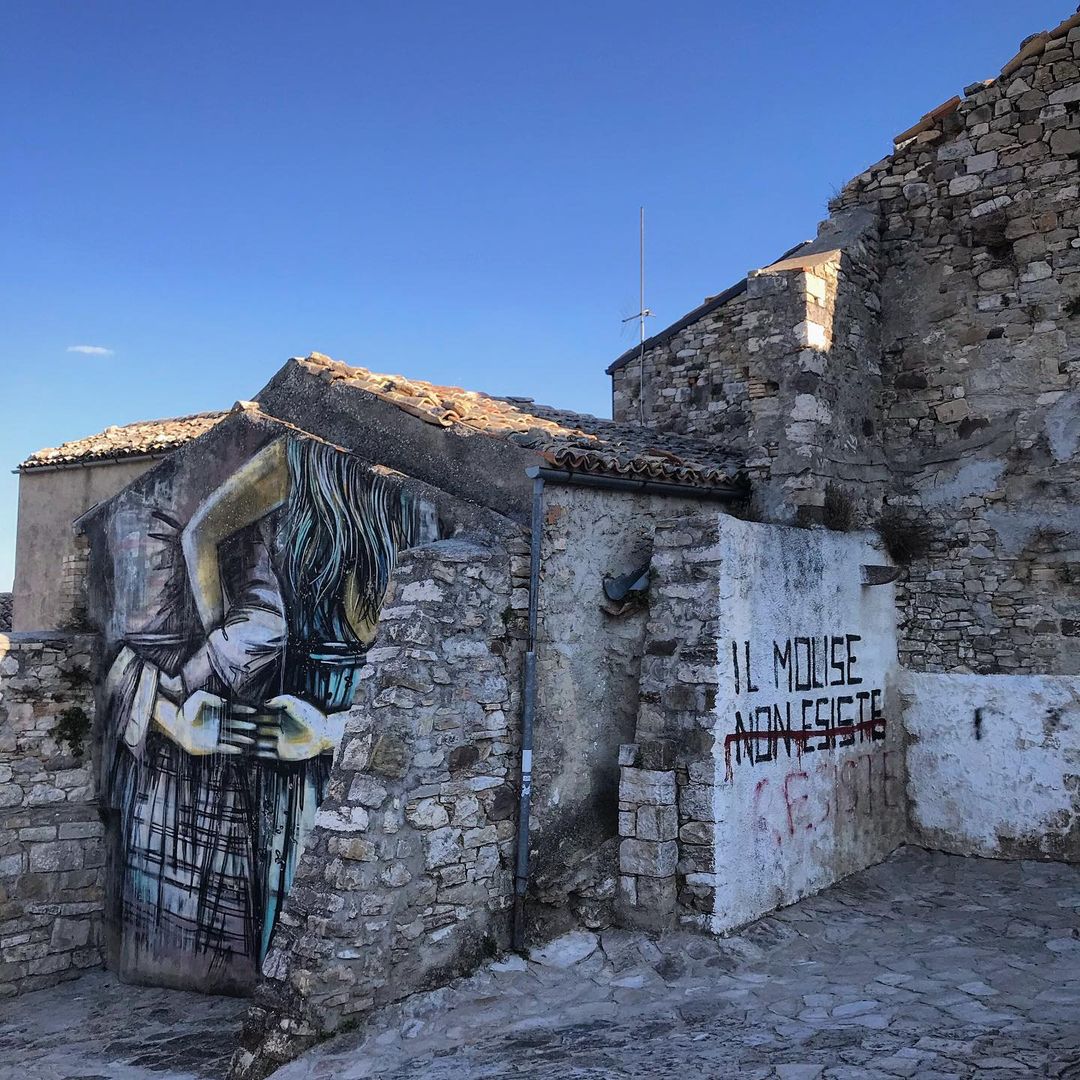
Civitacampomarano @Idf2607
CASACALENDA
Arte e natura sono le direttrici per descrivere Casacalenda, piccolo borgo risalente probabilmente al periodo della II guerra punica. Noto soprattutto per l’annuale festival del cinema che si svolge in estate, il Molise Film Festival, in questo comune si trova l’Oasi Lipu di bosco Casale, un’area boschiva di 105 ettari, che in primavera merita sicuramente una visita. Di arte contemporanea è, invece, impreziosito il borgo ed il suo territorio, grazie al Maack, Museo all’aperto d’arte contemporanea Kalenarte, (Il poeta di Casacalenda del 1997, ne è un esempio).
Art and nature are the guidelines for describing Casacalenda, a small village probably dating back to the period of the Second Punic War. Best known for its annual film festival in the summer, the Molise Film Festival, this municipality is home to the Lipu Oasis of bosco Casale, a 105-hectare wooded area that is definitely worth a visit in spring. Contemporary art is, on the other hand, embellished in the village and its territory, thanks to Maack, Kalenarte Open-air Museum of Contemporary Art,(The Poet of Casacalenda from 1997, is an example).
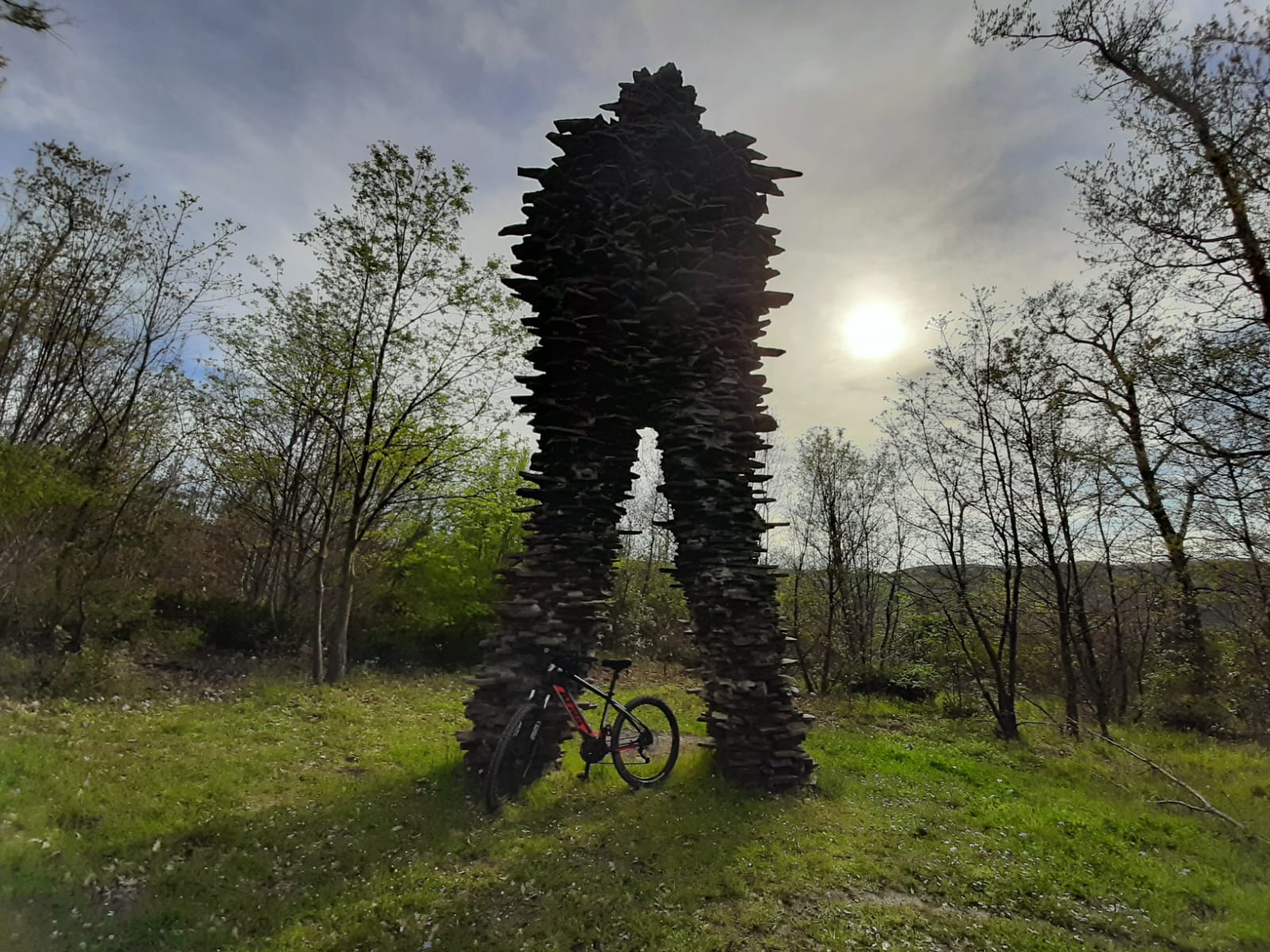
Altro curioso museo è inoltre quello del Bufù, un “tamburo a frizione” costituito da un contenitore dal fondo chiuso e con il lato superiore aperto e ricoperto da pelli di animali essiccate, al centro delle quali viene legata una canna. Uno strumento musicale piuttosto insolito che produce un suono cupo e profondo che suonato da mani sapienti sa davvero coinvolgere.
Di archeologia, infine, parliamo grazie al sito di Gerione, città fortificata su un altipiano tra Larino e Casacalenda di cui oggi sono visibili i ruderi. Reso celebre per la presenza dell’accampamento di Annibale durante la seconda Guerra Punica, questo sito è di notevole interesse storico e paesaggistico e, soprattutto, tappa immancabile nei nostri tour in e-bike Casacalenda-Gerione.
Vacanza in bici in Molise : ➡️ https://agriturismoessentia.com/blog/vacanze-in-bicicletta-perch%C3%A9-il-molise-%C3%A8-la-meta-ideale
Another curious museum is also that of the Bufù, a "friction drum" consisting of a container with a closed bottom and with the top side open and covered with dried animal skins, in the middle of which a reed is tied. A rather unusual musical instrument that produces a dark, deep sound that when played by skilled hands can really engage.
Finally, we talk about archaeology thanks to the site of Gerione, a fortified city on a plateau between Larino and Casacalenda whose ruins are visible today. Made famous for the presence of Hannibal's camp during the Second Punic War, this site is of considerable historical and scenic interest and, above all, an unmissable stop on our Casacalenda-Gerione e-bike tours.
Cycling vacation in Molise : ➡️ https://agriturismoessentia.com/blog/vacanze-in-bicicletta-perch%C3%A9-il-molise-%C3%A8-la-meta-ideale

Valle del Cigno @RobertoZeoli
TRADIZIONI CHE PERDURANO NEL TEMPO : I COMUNI DELLA CARRESE
Come già detto nel nostro articolo dedicato alla Carrese di San Martino in Pensilis, il Basso Molise è caratterizzato da tradizioni religiose antichissime e sorprendenti. Le Carresi sono sicuramente tra queste. Si svolgono in primavera, momento di rinascita, ed hanno al loro centro il carro (agricolo). I comuni interessati sono San Martino in Pensilis (il 30 aprile), Ururi (3 maggio), Larino (25-27 maggio), Portocannone (lunedì dopo la Pentecoste). In ogni comune la Carrese celebra il Santo Patrono; per tutti i comuni, eccetto Larino, si tratta di una corsa tra due o più carri trainati da coppie di buoi. Inutile dire quanta energia e partecipazione accompagnino i giorni preparatori alla corsa e la gara stessa.
TRADITIONS THAT ENDURE OVER TIME : THE CARRESE MUNICIPALITIES
As mentioned in our article dedicated to the Carrese of San Martino in Pensilis, Lower Molise is characterized by very ancient and surprising religious traditions. The Carrese are definitely among them. They take place in spring, a time of rebirth, and have at their center the (agricultural) cart. The municipalities involved are San Martino in Pensilis (on April 30), Ururi (May 3), Larino (May 25-27), and Portocannone (Monday after Pentecost). In each municipality the Carrese celebrates the patron saint; for all municipalities except Larino, it is a race between two or more carts pulled by pairs of oxen. Needless to say, how much energy and participation accompany the days leading up to the race and the race itself.

@PasqualeDilegge
Carrese di San Martino in Pensilis ➡️ https://agriturismoessentia.com/blog/la-carrese-di-san-martino-in-pensilis
A Larino, la cui Carrese risale all’842 d.C. e risulta pertanto la più antica tra le Carresi e tra le manifestazioni molisane, da un’iniziale corsa di buoi, la celebrazione si è tramutata in una sfilata di ben 3 giorni di oltre 100 carri addobbati con fiori di carta realizzati a mano e trainati da mucche e buoi. Un tripudio di colori, canti e suoni.
In Larino, whose Carrese dates back to842 A.D. and is therefore the oldest of the Carrese and among Molisian events, from an initial ox race, the celebration turned into a 3-day parade of more than 100 floats decorated with handmade paper flowers and pulled by cows and oxen. A riot of colors, songs and sounds.

Secondo noi le Carresi sono eventi imperdibili per chiunque voglia conoscere l’anima più profonda di questo territorio. Infatti, non manchiamo di suggerirle e raccontarle ai nostri ospiti.
In our opinion, the Carresi are unmissable events for anyone who wants to know thedeepest soul of this territory. In fact, we never fail to suggest and tell our guests about them.

L’ODIERNA TRANSUMANZA
La Transumanza, l’antico spostamento di greggi dalla montagna verso il mare e viceversa, è stato un elemento fondante della cultura contadina e pastorale del centro Italia e della sua economia. Oggi, di quello che un tempo rappresentava una vera ricchezza in grado di determinare lo sviluppo di aree abitative e commerciali, restano segni tangibili nei Tratturi, le vie verdi percorse dalle greggi. Il Molise è interessato da alcuni dei più importanti tratturi che, come delle arterie vitali dall’Abruzzo al Tavoliere delle Puglie, lo attraversano interamente. Oggi, finalmente divenuta Patrimonio immateriale dell’Umanità UNESCO, questa antica pratica è mantenuta viva dalla famiglia Colantuono che in primavera, nel mese di Maggio, sposta il proprio bestiame dalla Puglia a Frosolone. Si tratta di vero e proprio evento con una grande eco mediatica, a cui due anni fa abbiamo assistito, per una piccola parte, anche noi insieme ai nostri ospiti belgi. Nei giorni di cammino, due i tratturi parzialmente percorsi, il Tratturo Aquila-Foggia e Celano-Foggia, e tanti i comuni molisani attraversati tra cui Santa Croce di Magliano, Bonefro, San Giuliano di Puglia, Sant’Elia a Pianisi, Ripabottoni, Monacilioni, Campolieto e tanti altri.
TODAY'S TRANSHUMANCE
Transhumance, the ancient movement of flocks from the mountains to the sea and vice versa, was a founding element of central Italy's farming and pastoral culture and economy. Today, of what once represented a real wealth capable of determining the development of residential and commercial areas, tangible signs remain in the Tratturi, the greenways traveled by the flocks. Molise is affected by some of the most important sheep-tracks that, like vital arteries from Abruzzo to the Tavoliere delle Puglie, cross it entirely. Today, finally becoming a UNESCO Intangible World Heritage Site, this ancient practice is kept alive by the Colantuono family, which moves its cattle from Puglia to Frosolone in the spring, in the month of May. This is a real event with a great media echo, which two years ago we also witnessed, for a small part, together with our Belgian guests. During the days of walking, two sheep-tracks were partially traveled, the Aquila-Foggia and Celano-Foggia Tracture, and many Molise municipalities were crossed including Santa Croce di Magliano, Bonefro, San Giuliano di Puglia, Sant'Elia a Pianisi, Ripabottoni, Monacilioni, Campolieto and many others.

Possiamo assicurarvi che in qualsiasi punto del percorso, assistere al passaggio di questi 300 bovini e dei loro mandriani è pura magia, quasi un momento sospeso nel tempo, e non è difficile capire perché in ogni comune attraversato sia quasi una festa.
I tratturi, anche quando non percorsi dalla Transumanza, restano ottimi spunti per trekking di primavera.
We can assure you that at any point along the trail, witnessing the passage of these 300 cattle and their herdsmen is pure magic, almost a moment suspended in time, and it is not hard to see why in every commune crossed it is almost a celebration.
The sheep-tracks, even when not traversed by the Transhumance, remain excellent cues for spring trekking.
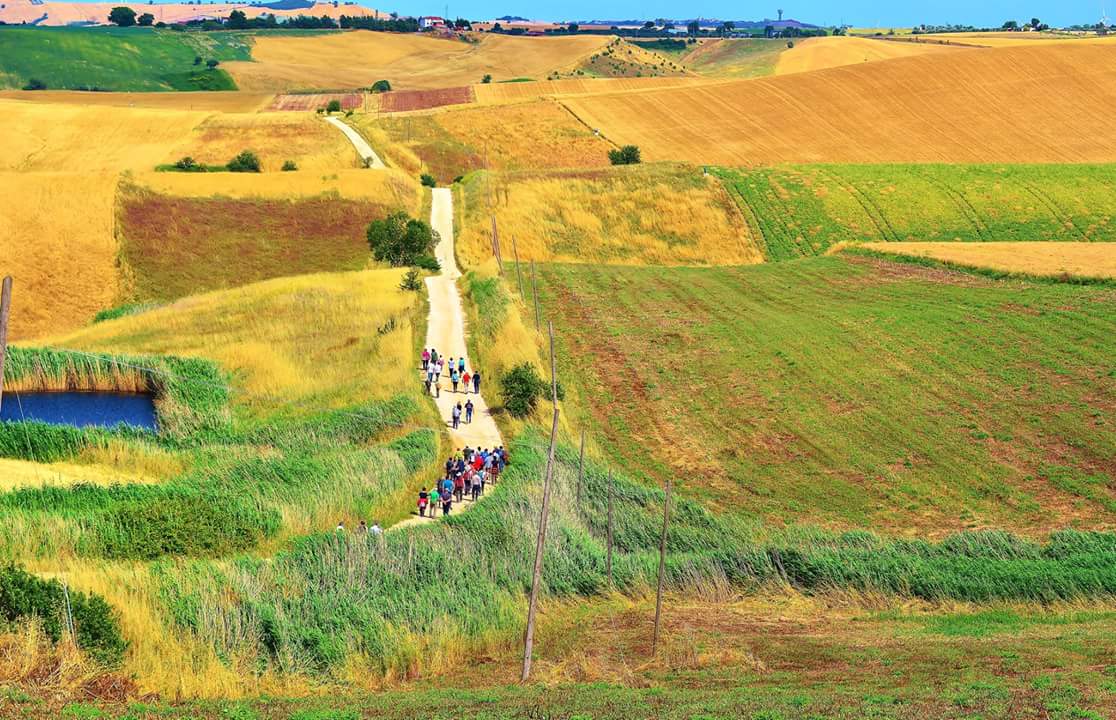
@RobertoZeoli
Suggerimenti sull'Alto Molise / Tips on Upper Molise
Parte 1 ➡️ https://agriturismoessentia.com/blog/weekend-in-molise-idee-di-viaggio-nell-alto-molise
Parte 2 ➡️ https://agriturismoessentia.com/blog/weekend-in-molise-idee-di-viaggio-nell-alto-molise-parte-2
Cosa vedere in Basso Molise parte 2 ➡️ https://agriturismoessentia.com/blog/cosa-vedere-in-basso-molise-parte-2




